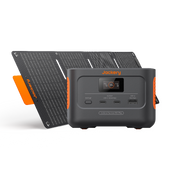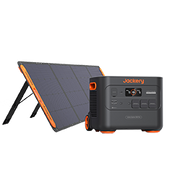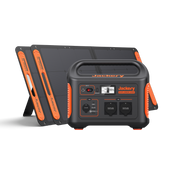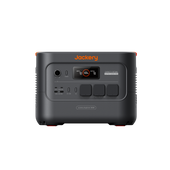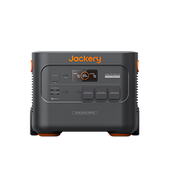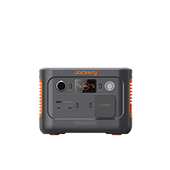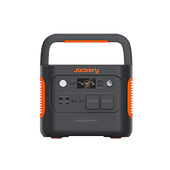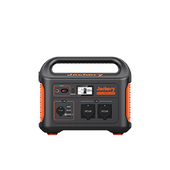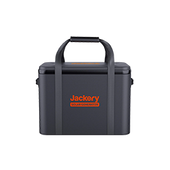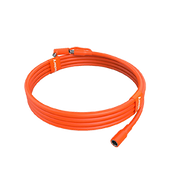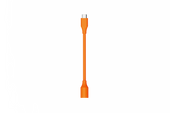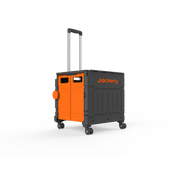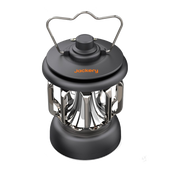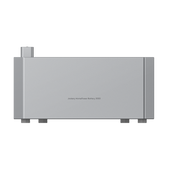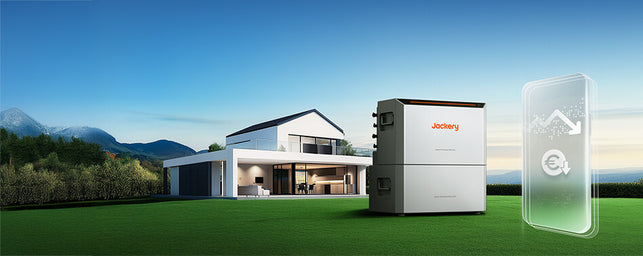A European forest holiday is the ultimate escape. Imagine waking to birdsong, hiking under ancient trees, and leaving daily stress behind. But with so many destinations to choose from, finding a truly immersive, unplugged nature experience can be tricky.
Where to Go For Your Forest Holiday
The appeal of forest holidays lies in their profound benefits for well-being, offering stress reduction and a deep connection with nature. From the fairytale landscapes of Germany's Black Forest to the primeval Białowieża Forest in Poland, Europe offers a diverse tapestry of woodland experiences. Each destination presents unique opportunities and planning considerations.
Key destinations for European travelers:
-
Germany (The Black Forest / Schwarzwald): This iconic German destination is known for its dark, dense forests and charming villages. Its popularity means you must book accommodations 6-9 months in advance for summer trips to secure a good spot.
-
Poland (Białowieża Forest / Białowieża-Nationalpark): For an unmatched wildlife experience, this UNESCO World Heritage Site is Europe's last primeval forest. It is home to European bison and over 250 bird species, making it a popular destination for birdwatchers.
-
Finland (The Land of a Thousand Lakes and Forests): As the most forested country in Europe, Finland offers a deep cultural connection to nature. Forestry is a significant part of the Finnish economy, and visitors can enjoy high-quality wild blueberries and the proximity of Helsinki to nature.
-
Belgium (The Ardennes / Ardennen): Highly accessible for shorter trips from Germany, the Netherlands, or France, the Ardennes offers rolling hills and dense forests. Expect muddy trails, especially outside of summer, so pack waterproof gear.
-
Italy (Trentino-Alto Adige / Südtirol): Nestled in the Dolomites, this mountainous region is ideal for active hikers. It combines lush alpine forests with stunning mountain trails, offering a physically demanding yet visually spectacular holiday.
-
Portugal (Madeira): This Atlantic island offers a unique forest experience with its UNESCO-listed Laurisilva forests. The famous levada walks—irrigation channels with adjacent footpaths—provide a distinct way to explore the island's verdant interior.
-
Slovenia (Soča Valley / Soča-Tal): This destination perfectly combines lush forests with adventure. The emerald-green Soča River runs through a valley ideal for rafting, kayaking, and hiking, making it perfect for a multi-activity forest lake holiday.
Planning and Booking: Securing Your Cabin Without Surprises
A great trip starts well before you pack. Booking strategically helps you avoid disappointment and hidden costs, ensuring your accommodation delivers the relaxing getaway you’re expecting.
How Can You Master the Booking Process?
Book popular sites and cabins 6–9 months ahead, especially for peak season travel in July and August. For better value and fewer crowds, target mid-week stays in the shoulder seasons of spring or autumn. These periods often showcase the forest in its most beautiful state, from spring blossoms to autumnal colours.
Before you commit, scrutinize accommodation listings for extra fees and critical details.
-
Check for hidden costs: Look for charges related to cleaning, linen rental, firewood, or local tourist taxes, as these can significantly increase the final price.
-
Confirm the cancellation policy: Always understand your options if plans change before you finalize the booking.
-
Verify essential amenities: Double-check accessibility details like steps versus ramps, confirm the rules regarding pets, and, most importantly, inquire about the availability and number of power outlets or on-site EV charging stations.
How Do You Choose the Right Accommodation?
Cabins and Lodges
The classic choice for forest holidays—rustic yet comfortable. Always check recent guest reviews and photos to confirm maintenance standards and the condition of kitchen facilities, heating, and bathrooms.
Treehouses
Private stays elevated among the branches, offering an unforgettable perspective. This trend is growing across Europe for special, one-of-a-kind experiences. Before booking, check accessibility—especially for families with young children or guests with mobility concerns—as many treehouses require steep stairs or ladders.
Forest Villages
Examples like the Huttopia concept provide spacious, fully equipped accommodations in natural settings. These sites feature:
-
Low-density plots
-
100% pedestrian access
-
Outdoor living areas with plancha grills
-
Forest Spas with wooden saunas and Nordic hot tubs
Many intentionally offer no WiFi for a true digital detox.
There are countries where wild camping may be legal. You can check out our Guide to Wild Camping to know more.
Activities and Safety: Making the Most of Your Time in Nature
How Should You Plan Your Adventures?
Hiking and Biking
-
Use mapping apps with offline capabilities (like AllTrails) so you can navigate without mobile signal.
-
If renting an e-bike, confirm charging logistics with the rental company in advance—or bring a portable power solution to ensure you can recharge anywhere.
-
Top destinations for diverse trails, from gentle walks to challenging mountain treks, include the Black Forest, Ardennes, and Trentino-Alto Adige.
Wildlife Spotting
-
The best times are early morning or dusk, when animals are most active.
-
Białowieża Forest is a top birdwatching spot, home to rare species like the Eurasian Bullfinch (Gimpel), with its striking rosy-red breast in males.
Wellness-Focused Trips
-
Consider whether the extra cost of amenities like a private sauna or hot tub is worth it, or if you’d prefer a simpler, restorative trip focused purely on nature.

How Can You Prioritize Health and Safety?
Respect Nature
-
Follow the Seven Leave No Trace Principles.
-
Stay on marked paths to protect fragile ecosystems.
-
Pack out all rubbish.
-
Never feed or disturb wildlife—remember, the forest is their home.
Protect Yourself from Insects
-
Ticks and insects are common in European forests.
-
Use a reliable insect repellent.
-
Wear long sleeves and trousers in dense undergrowth.
-
Perform daily tick checks on yourself, children, and pets after outdoor activities.
-
Learn local guidance on tick-borne illnesses—e.g., in Germany, the Robert Koch Institute provides official advice.
Plan for the Unexpected
-
Pack for all weather—mountain and forest climates can change quickly.
-
If you arrive at accommodation with serious safety or sanitation issues:
-
Document everything with photos.
-
Contact the host or booking platform immediately.
Essential Gear: Packing for Comfort and Self-Sufficiency
Thoughtful packing is the final step in preparing for a seamless forest escape. The right gear ensures you are comfortable, safe, and self-reliant, no matter how remote your cabin is.
What Are the Clothing and Safety Basics?
Pack clothing in layers that you can add or remove as conditions change. A moisture-wicking base layer, an insulating mid-layer like fleece, and a fully waterproof outer shell are essential. Sturdy, waterproof hiking boots with good grip are non-negotiable for safety and comfort on uneven trails.
Your safety kit should include a well-stocked first-aid kit, a quality insect repellent, a tick removal tool, and a headlamp or torch for navigating after dark. Carry offline maps or a dedicated GPS device as a reliable backup, especially if you are venturing into areas with poor or non-existent mobile signal.
How Can You Overcome Limited Electricity?
A common frustration in rustic cabins and remote campsites is the lack of power. Many locations have few, unreliable, or no power outlets, making it difficult to charge phones, cameras, laptops, or power essential devices like a small cooler or CPAP machine.
A portable solar generator provides a clean, quiet, and reliable off-grid power source. It ensures your devices stay charged for navigation, safety, communication, and comfort, transforming a rustic setting into a comfortable home base.
Which Jackery Model Is Right for Your Trip?
|
Model |
Capacity & Output |
Key Features |
Best For |
|
288Wh / 300W (600W Surge Peak) |
8.27 lbs (3.75 kg), Durable LiFePO4 battery |
Solo travelers and short trips, powering phones, cameras, and drones. |
|
|
512Wh capacity and 500W output |
6,000 Life Cycles to 70%+ Capacity |
Families and weekend getaways needing to power small appliances. |
|
|
1070Wh / 1500W |
0-100% emergency supercharge in 1 hour (wall), 100W dual PD charging. |
Longer stays or higher power needs, running fans, monitors, and printers. |
Pair your generator with Jackery's bifacial solar panels to recharge your power station during the day. This creates a truly sustainable and off-grid power source, giving you complete energy independence. You can also read more on how to power your European camping trips.
What Are the Safety Rules for Power Stations?
Before plugging anything in, always check the power draw (in watts) of your devices against the continuous output of your Jackery model to prevent overloading. Additionally, some managed campsites may have rules regarding the use of external power sources. It is always best to confirm their policy before you arrive to ensure a smooth check-in.
Plan Smart for an Unforgettable Trip
A great European forest holiday starts with smart planning. Book early, choose your accommodation carefully, and pack the essentials to avoid the common pitfalls that can spoil a trip. With the right preparation, you can fully enjoy the peace and beauty of nature.
Adding a Jackery Solar Generator to your gear takes the experience to the next level. It removes the worry of running out of power, keeping you connected, safe, and comfortable wherever you are. With reliable energy at hand, you can focus on what really matters—making unforgettable memories in the great outdoors.
Frequently Asked Questions
How does the choice of season impact the types of activities available in these European forests?
Winter may offer snowshoeing or cross-country skiing in the Alps or Ardennes, while spring brings wildflowers perfect for photography. Summer is ideal for swimming in a forest lake holiday setting, and autumn is prime time for mushroom foraging and enjoying the foliage.
Beyond the suggested destinations, what criteria should I use to discover other lesser-known but equally rewarding European forest areas?
Look for areas with national park status, as they offer protected landscapes and good infrastructure. Research biodiversity hotspots for unique wildlife, check accessibility by public transport if you are not driving, and consult local tourism board resources for hidden gems.
What are the common cultural nuances or etiquette tips specific to visiting forests in different European countries mentioned?
In Germany and Austria, it is customary to greet fellow hikers with "Hallo" or "Servus." In many regions, dog walking rules are strict, requiring leashes on marked trails. Traditions around foraging vary, so always check local regulations before picking mushrooms or berries.
What are the potential environmental impacts of increased tourism in these forest areas, and how can I ensure my visit remains as sustainable as possible?
Beyond practicing "Leave No Trace," you can minimize your impact by choosing eco-certified accommodations, supporting local businesses and farmers' markets, and offsetting your travel's carbon footprint. Being mindful of water and energy consumption, even when using a generator, contributes to overall sustainability.










